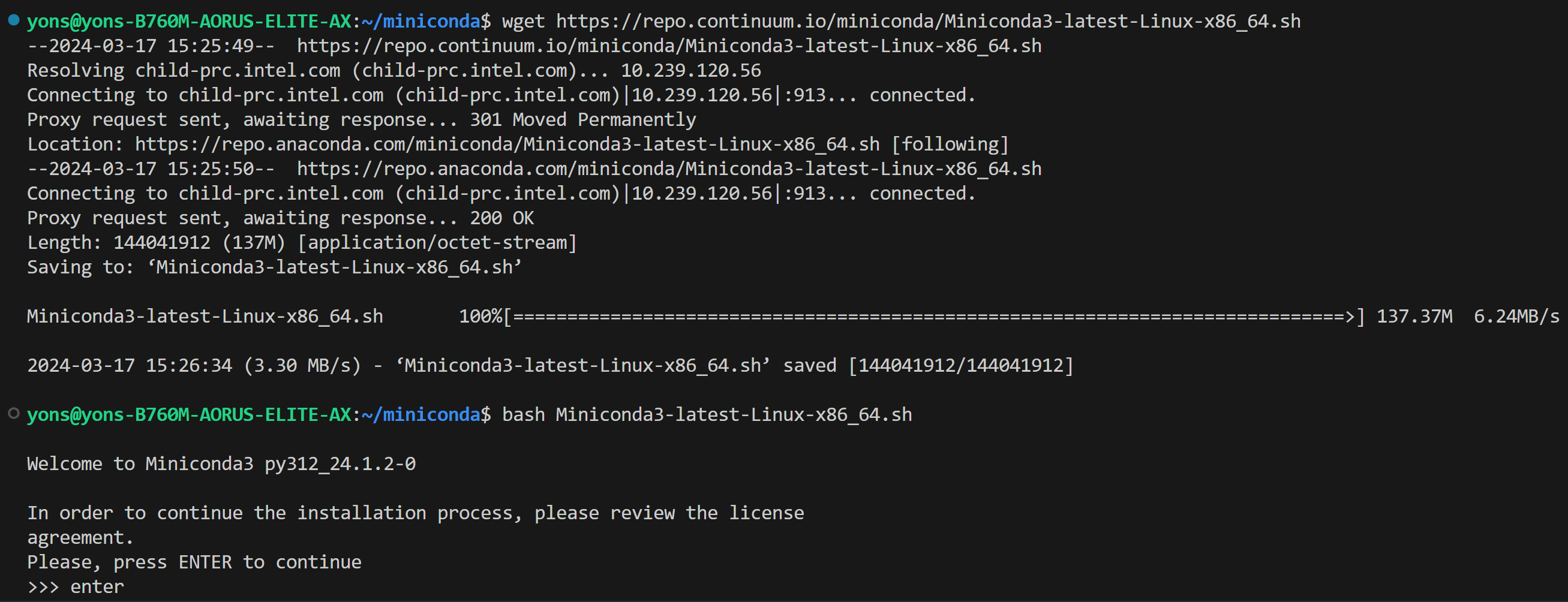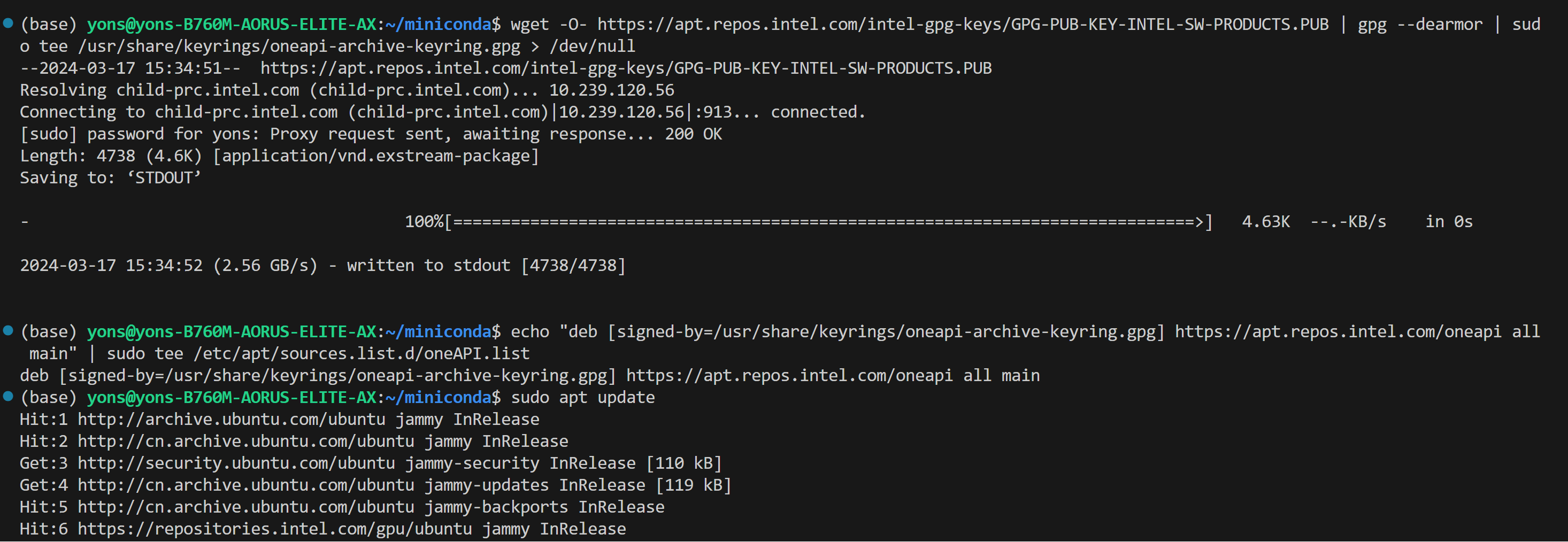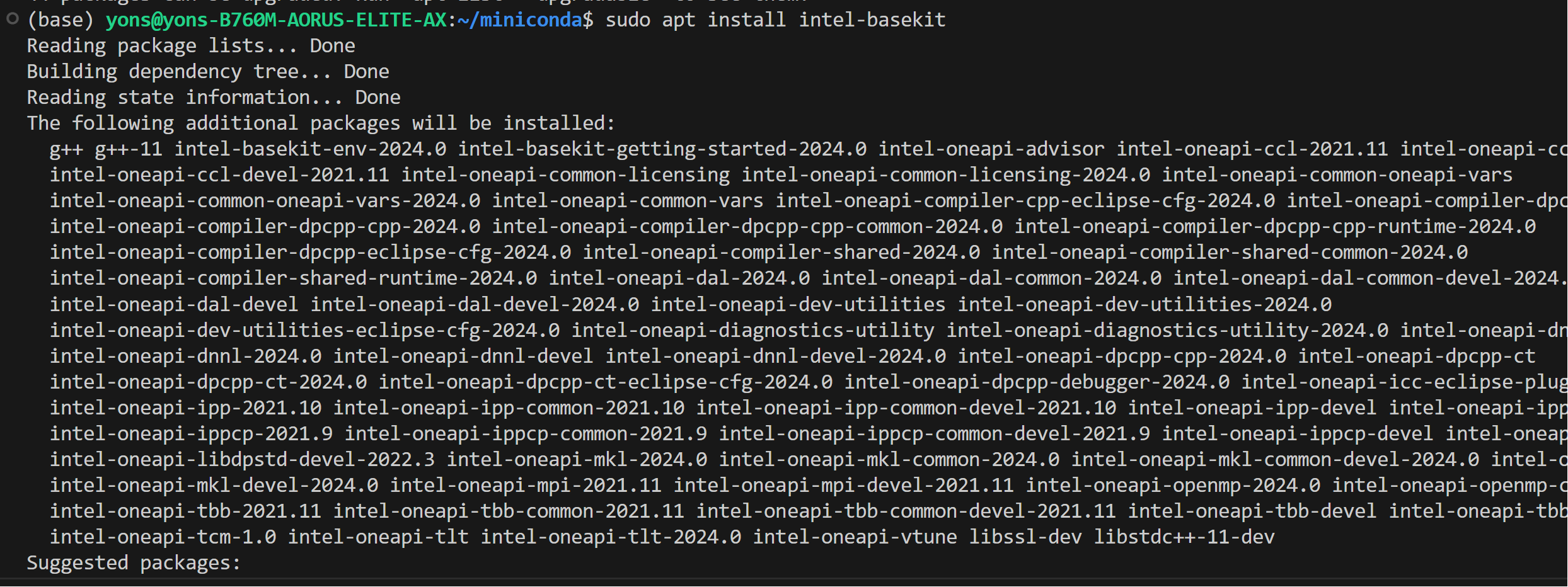Install BigDL-LLM on Linux with Intel GPU#
This guide demonstrates how to install BigDL-LLM on Linux with Intel GPUs. It applies to Intel Data Center GPU Flex Series and Max Series, as well as Intel Arc Series GPU.
BigDL-LLM currently supports the Ubuntu 20.04 operating system and later, and supports PyTorch 2.0 and PyTorch 2.1 on Linux. This page demonstrates BigDL-LLM with PyTorch 2.1. Check the Installation page for more details.
Install Intel GPU Driver#
For Linux kernel 6.2#
Install arc driver
sudo apt-get install -y gpg-agent wget wget -qO - https://repositories.intel.com/gpu/intel-graphics.key | \ sudo gpg --dearmor --output /usr/share/keyrings/intel-graphics.gpg echo "deb [arch=amd64,i386 signed-by=/usr/share/keyrings/intel-graphics.gpg] https://repositories.intel.com/gpu/ubuntu jammy client" | \ sudo tee /etc/apt/sources.list.d/intel-gpu-jammy.list
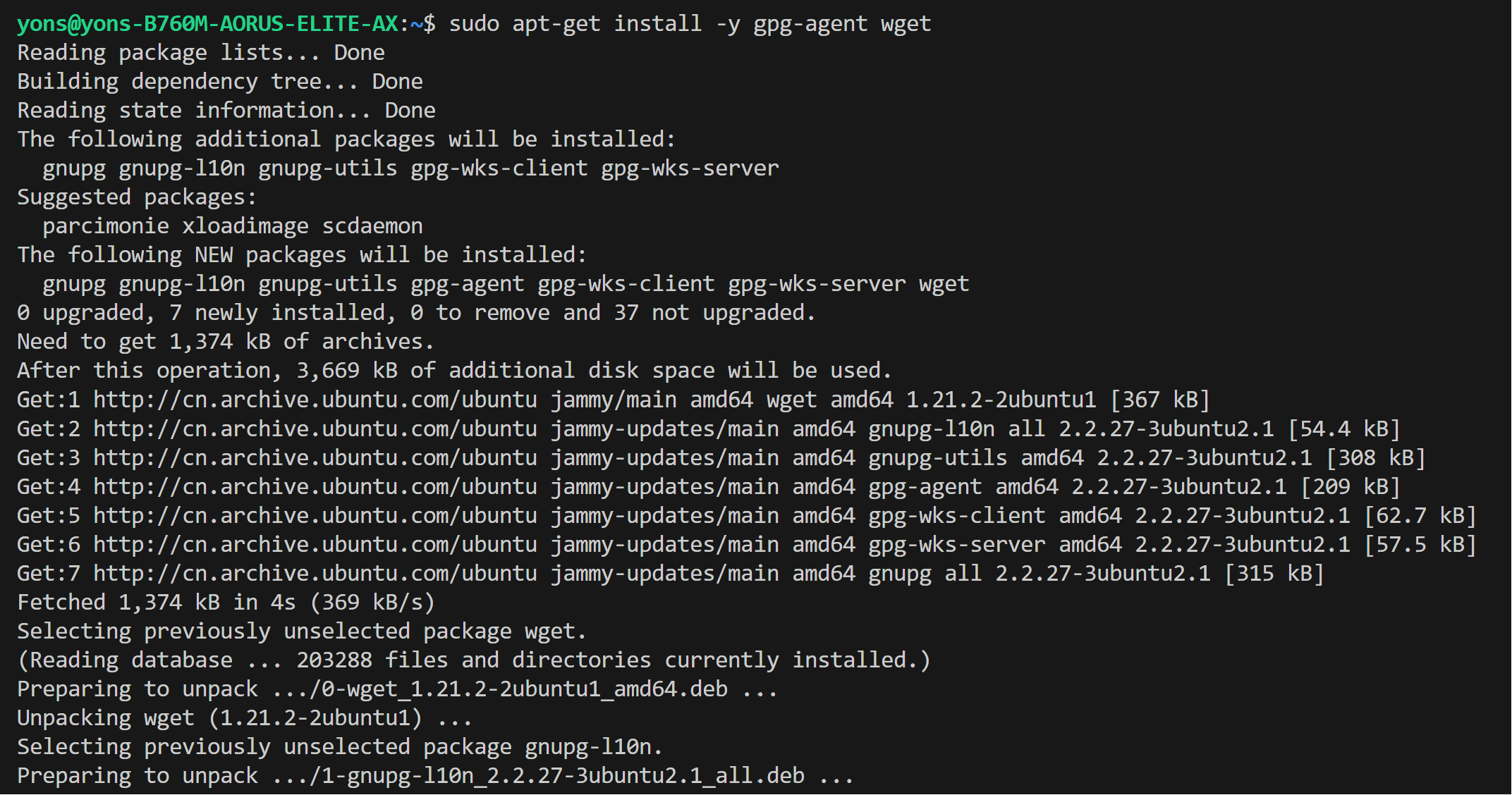
Install drivers
sudo apt-get update sudo apt-get -y install \ gawk \ dkms \ linux-headers-$(uname -r) \ libc6-dev sudo apt install intel-i915-dkms intel-fw-gpu sudo apt-get install -y gawk libc6-dev udev\ intel-opencl-icd intel-level-zero-gpu level-zero \ intel-media-va-driver-non-free libmfx1 libmfxgen1 libvpl2 \ libegl-mesa0 libegl1-mesa libegl1-mesa-dev libgbm1 libgl1-mesa-dev libgl1-mesa-dri \ libglapi-mesa libgles2-mesa-dev libglx-mesa0 libigdgmm12 libxatracker2 mesa-va-drivers \ mesa-vdpau-drivers mesa-vulkan-drivers va-driver-all vainfo sudo reboot
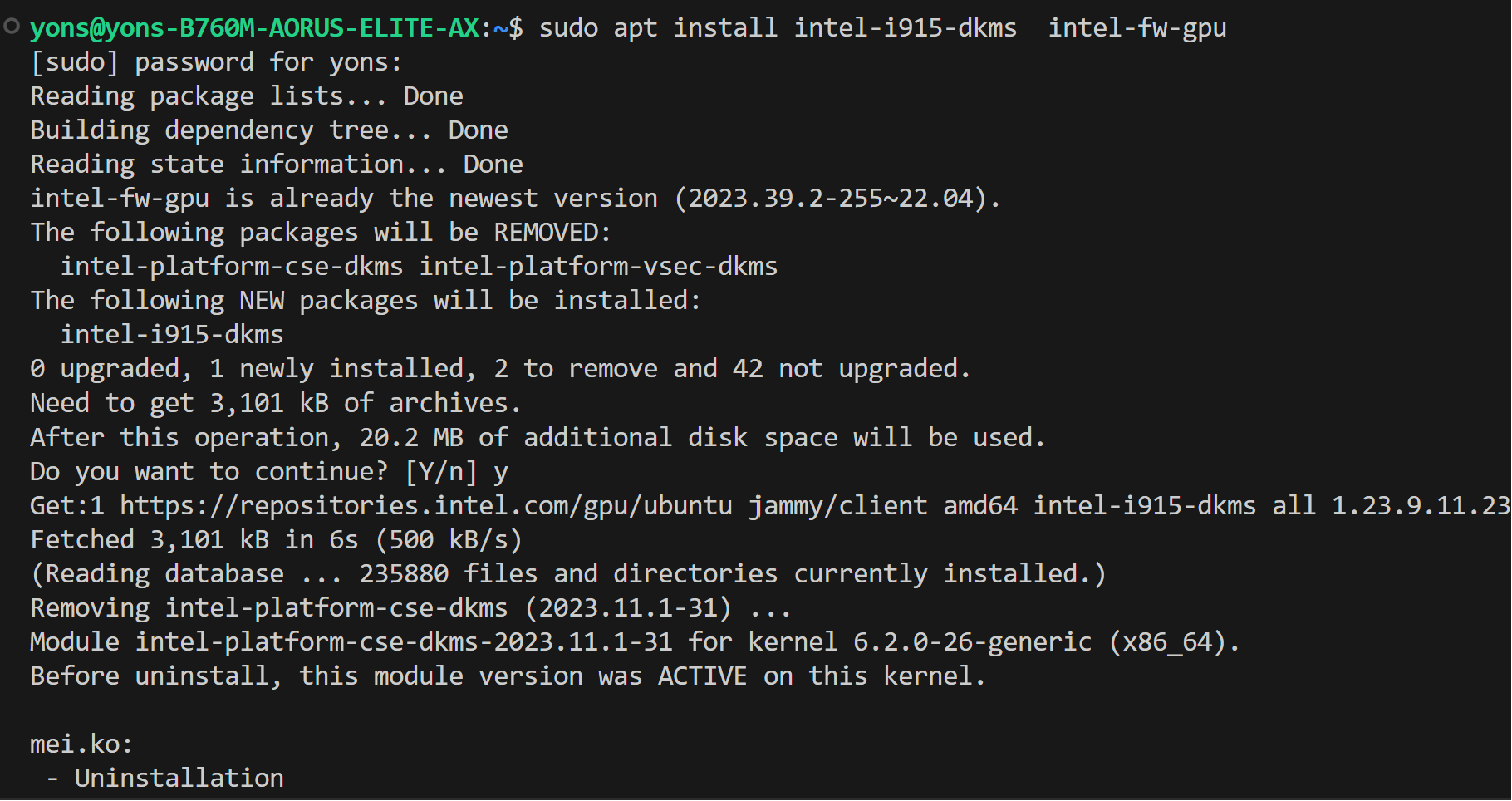
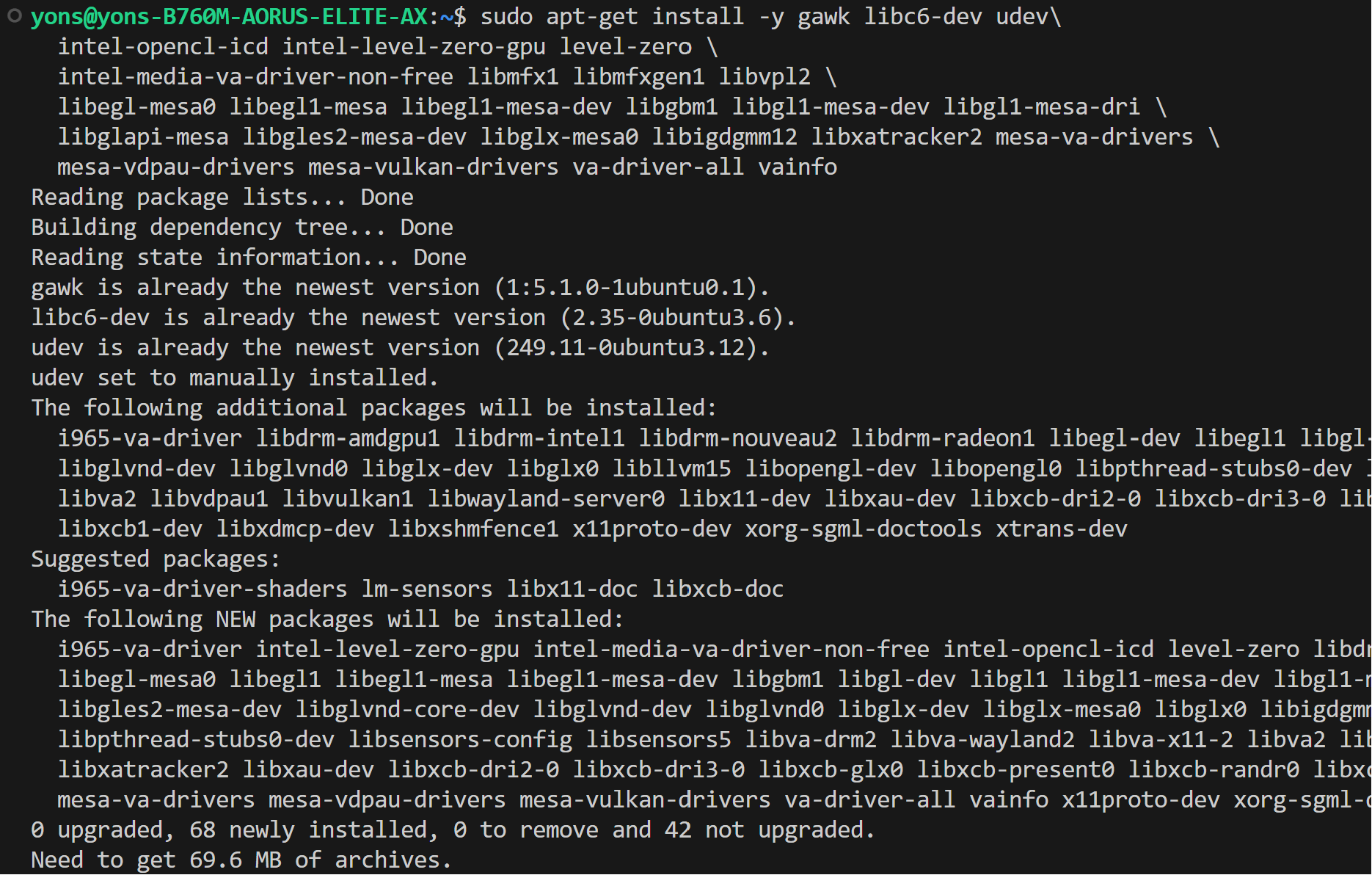
Configure permissions
sudo gpasswd -a ${USER} render newgrp render # Verify the device is working with i915 driver sudo apt-get install -y hwinfo hwinfo --display
Setup Python Environment#
Install the Miniconda as follows if you don’t have conda installed on your machine:
wget https://repo.continuum.io/miniconda/Miniconda3-latest-Linux-x86_64.sh
bash Miniconda3-latest-Linux-x86_64.sh
source ~/.bashrc
# Verify the installation
conda --version
# rm Miniconda3-latest-Linux-x86_64.sh # if you don't need this file any longer
Install oneAPI#
wget -O- https://apt.repos.intel.com/intel-gpg-keys/GPG-PUB-KEY-INTEL-SW-PRODUCTS.PUB | gpg --dearmor | sudo tee /usr/share/keyrings/oneapi-archive-keyring.gpg > /dev/null
echo "deb [signed-by=/usr/share/keyrings/oneapi-archive-keyring.gpg] https://apt.repos.intel.com/oneapi all main" | sudo tee /etc/apt/sources.list.d/oneAPI.list
sudo apt update
sudo apt install intel-basekit
Install bigdl-llm#
With the
llmenvironment active, usepipto installbigdl-llmfor GPU:conda create -n llm python=3.9 conda activate llm pip install --pre --upgrade bigdl-llm[xpu] --extra-index-url https://developer.intel.com/ipex-whl-stable-xpu
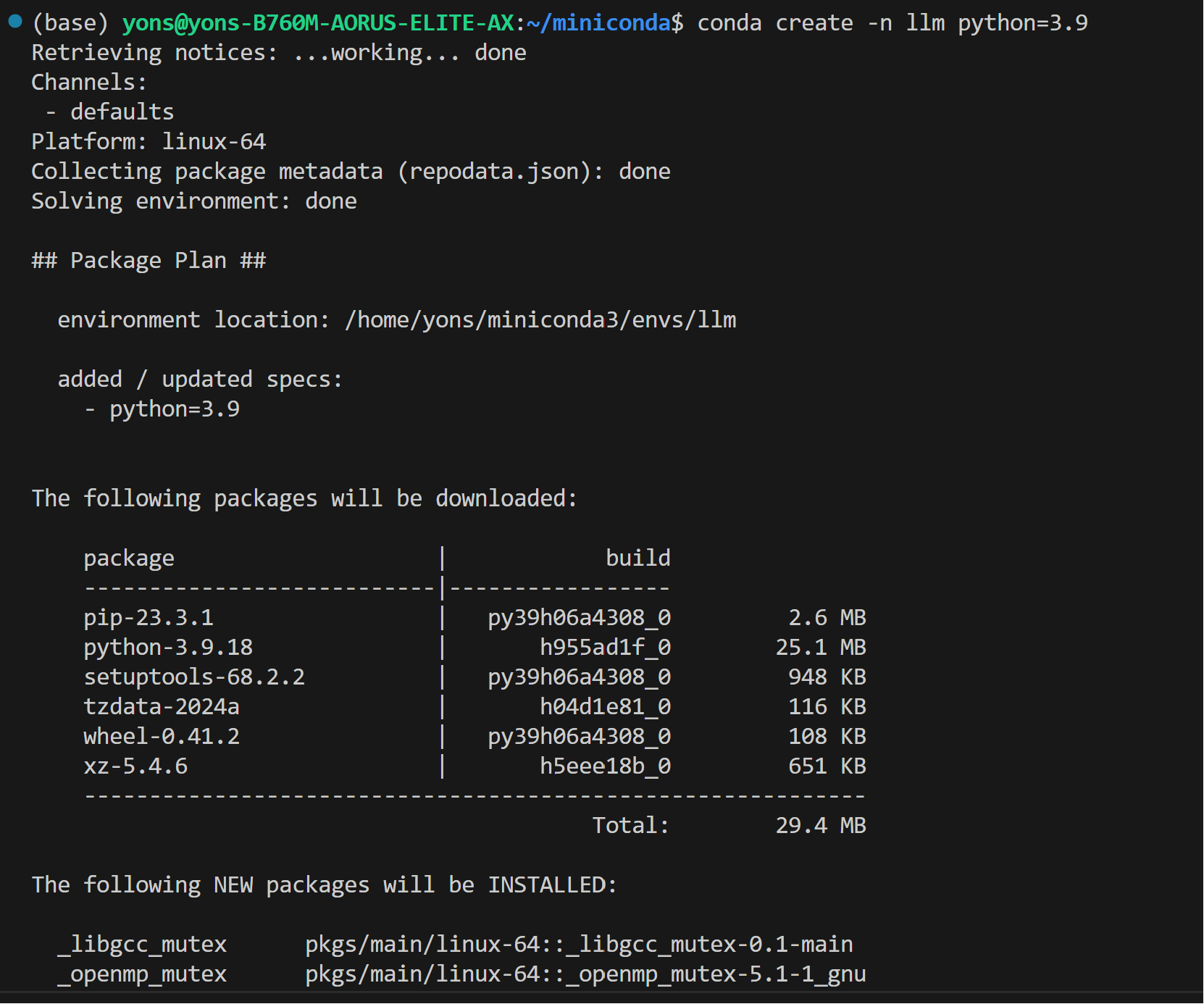

You can verify if bigdl-llm is successfully installed by simply importing a few classes from the library. For example, execute the following import command in the terminal:
source /opt/intel/oneapi/setvars.sh python > from bigdl.llm.transformers import AutoModel, AutoModelForCausalLM
Runtime Configurations#
To use GPU acceleration on Linux, several environment variables are required or recommended before running a GPU example.
For Intel Arc™ A-Series Graphics and Intel Data Center GPU Flex Series, we recommend:
# Configure oneAPI environment variables. Required step for APT or offline installed oneAPI. # Skip this step for PIP-installed oneAPI since the environment has already been configured in LD_LIBRARY_PATH. source /opt/intel/oneapi/setvars.sh # Recommended Environment Variables for optimal performance export USE_XETLA=OFF export SYCL_PI_LEVEL_ZERO_USE_IMMEDIATE_COMMANDLISTS=1
For Intel Data Center GPU Max Series, we recommend:
# Configure oneAPI environment variables. Required step for APT or offline installed oneAPI. # Skip this step for PIP-installed oneAPI since the environment has already been configured in LD_LIBRARY_PATH. source /opt/intel/oneapi/setvars.sh # Recommended Environment Variables for optimal performance export LD_PRELOAD=${LD_PRELOAD}:${CONDA_PREFIX}/lib/libtcmalloc.so export SYCL_PI_LEVEL_ZERO_USE_IMMEDIATE_COMMANDLISTS=1 export ENABLE_SDP_FUSION=1
Please note that
libtcmalloc.socan be installed byconda install -c conda-forge -y gperftools=2.10.
A Quick Example#
Now let’s play with a real LLM. We’ll be using the phi-1.5 model, a 1.3 billion parameter LLM for this demostration. Follow the steps below to setup and run the model, and observe how it responds to a prompt “What is AI?”.
Step 1: Open the Anaconda Prompt and activate the Python environment
llmyou previously created:conda activate llm
Step 2: If you’re running on iGPU, set some environment variables by running below commands:
For more details about runtime configurations, refer to this guide:
# Skip this step for PIP-installed oneAPI since the environment has already been configured in LD_LIBRARY_PATH. source /opt/intel/oneapi/setvars.sh # Recommended Environment Variables for optimal performance export USE_XETLA=OFF export SYCL_PI_LEVEL_ZERO_USE_IMMEDIATE_COMMANDLISTS=1
Step 3: Create a new file named
demo.pyand insert the code snippet below.# Copy/Paste the contents to a new file demo.py import torch from bigdl.llm.transformers import AutoModelForCausalLM from transformers import AutoTokenizer, GenerationConfig generation_config = GenerationConfig(use_cache = True) tokenizer = AutoTokenizer.from_pretrained("tiiuae/falcon-7b", trust_remote_code=True) # load Model using bigdl-llm and load it to GPU model = AutoModelForCausalLM.from_pretrained( "tiiuae/falcon-7b", load_in_4bit=True, cpu_embedding=True, trust_remote_code=True) model = model.to('xpu') # Format the prompt question = "What is AI?" prompt = " Question:{prompt}\n\n Answer:".format(prompt=question) # Generate predicted tokens with torch.inference_mode(): input_ids = tokenizer.encode(prompt, return_tensors="pt").to('xpu') # warm up one more time before the actual generation task for the first run, see details in `Tips & Troubleshooting` # output = model.generate(input_ids, do_sample=False, max_new_tokens=32, generation_config = generation_config) output = model.generate(input_ids, do_sample=False, max_new_tokens=32, generation_config = generation_config).cpu() output_str = tokenizer.decode(output[0], skip_special_tokens=True) print(output_str)
Note: when running LLMs on Intel iGPUs with limited memory size, we recommend setting
cpu_embedding=Truein thefrom_pretrainedfunction. This will allow the memory-intensive embedding layer to utilize the CPU instead of GPU.Step 5. Run
demo.pywithin the activated Python environment using the following command:python demo.py
Example output#
Example output on a system equipped with an 11th Gen Intel Core i7 CPU and Iris Xe Graphics iGPU:
Question:What is AI?
Answer: AI stands for Artificial Intelligence, which is the simulation of human intelligence in machines.
Tips & Troubleshooting#
Warmup for optimial performance on first run#
When running LLMs on GPU for the first time, you might notice the performance is lower than expected, with delays up to several minutes before the first token is generated. This delay occurs because the GPU kernels require compilation and initialization, which varies across different GPU types. To achieve optimal and consistent performance, we recommend a one-time warm-up by running model.generate(...) an additional time before starting your actual generation tasks. If you’re developing an application, you can incorporate this warmup step into start-up or loading routine to enhance the user experience.
